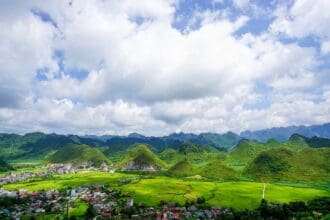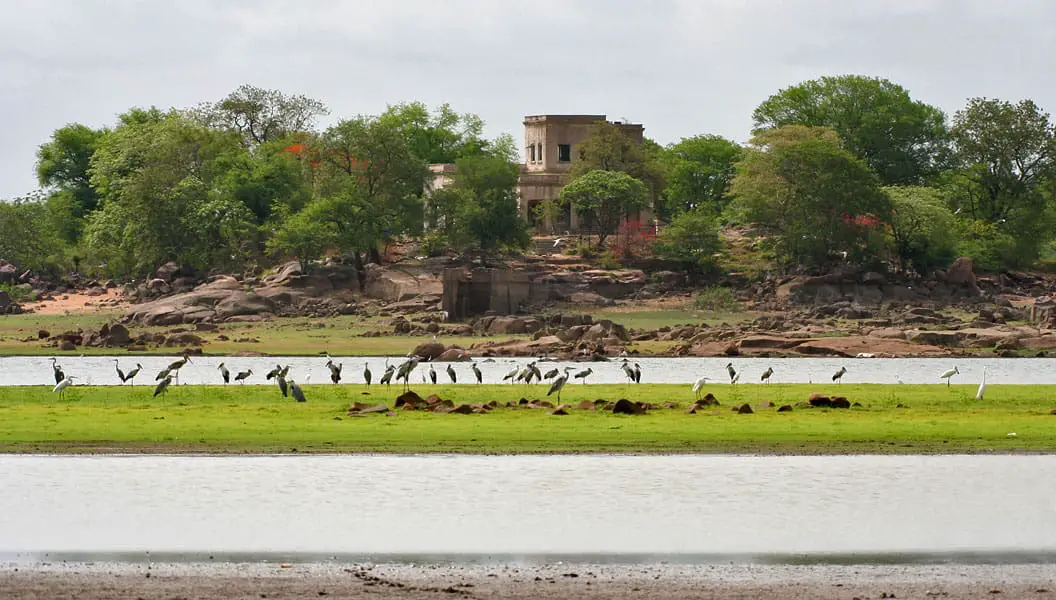Majuli, the world’s largest river island nestled in the Brahmaputra River of Assam, India, is a destination like no other. Known for its breathtaking natural beauty, vibrant cultural heritage, and serene spiritual atmosphere, Majuli offers travelers an unparalleled experience. This enchanting island is home to ancient monasteries, lush wetlands, and traditional villages that reflect the rich traditions of the Mishing and other indigenous communities. In this article, we will explore the top five places to visit in Majuli , providing you with a comprehensive guide to make your trip unforgettable.
1. Satras: Spiritual and Cultural Centers
A Glimpse into History
The Satras of Majuli are ancient monasteries that serve as the heart of Assamese Vaishnavite culture and spirituality. Established by the revered saint-reformer Srimanta Sankardeva in the 16th century, these Satras are not just religious institutions but also centers for art, music, dance, and traditional crafts. Each Satra has its unique identity and significance, making them a must-visit for anyone exploring Majuli.
Why Visit the Satras?
For those seeking spiritual enlightenment or simply wishing to immerse themselves in the island’s cultural richness, the Satras offer an unparalleled experience. The tranquil ambiance, coupled with the chanting of hymns and the aroma of burning incense, creates an atmosphere of peace and introspection. Visitors can witness traditional performances of Bhaona (a form of Assamese theater) and Sattriya Nritya (classical dance), which are integral to the Satra tradition.
Top Satras to Explore
- Kamalabari Satra: Renowned for its contributions to Assamese art and culture, Kamalabari Satra is a hub for traditional mask-making and classical dance.
- Dakhinpat Satra: Famous for hosting the annual Raas Mahotsav, this Satra is a center for spiritual learning and cultural celebrations.
- Auniati Satra: Known for its vast collection of ancient manuscripts and artifacts, Auniati Satra also preserves traditional Assamese crafts.
Activities Around the Satras
Visitors can participate in daily prayer sessions, interact with monks, or explore the museums within the Satras, which house ancient manuscripts, musical instruments, and ritual objects. These artifacts provide a glimpse into the rich cultural heritage of Assam and its deep-rooted connection with Vaishnavism.
“The Satras of Majuli are not just places of worship; they are living embodiments of Assam’s spiritual and cultural legacy.”
Detailed Exploration of the Surroundings
The Satras are surrounded by lush greenery and paddy fields, offering stunning views of the island’s natural beauty. Early mornings and late afternoons are ideal times to visit, as the soft sunlight enhances the beauty of the surroundings. Visitors can take leisurely walks along the pathways leading to the Satras, enjoying the fresh air and the sounds of nature.
2. Mishing Villages: A Glimpse into Indigenous Life
Discovering the Mishing Community
The Mishing villages of Majuli are vibrant hubs of traditional life, where visitors can experience the unique culture and lifestyle of the Mishing tribe. Known for their warm hospitality and rich traditions, the Mishing people have preserved their way of life despite modern influences. Their stilt houses, traditional attire, and festivals are a testament to their deep connection with nature.
Why Visit Mishing Villages?
For those seeking an authentic cultural experience, the Mishing villages offer a rare opportunity to interact with the local community and learn about their customs, traditions, and daily lives. The villagers are skilled artisans, known for their expertise in weaving, pottery, and bamboo crafts. Visitors can purchase handmade items such as mekhela chadors (traditional Assamese sarees) and bamboo baskets as souvenirs.
Activities in Mishing Villages
Visitors can participate in traditional festivals such as Ali-Aye-Ligang , a springtime celebration marked by feasts, dances, and rituals. They can also join cooking classes to learn how to prepare traditional Mishing dishes such as poita bhat (fermented rice) and pitha (rice cakes). For adventure enthusiasts, trekking through the nearby forests and wetlands offers a chance to explore the region’s biodiversity.
Cultural Experiences
The Mishing villages are a great place to witness the vibrancy of local culture. Visitors can attend folk performances, participate in traditional games, or simply observe the daily lives of the villagers. The villages are particularly lively during festivals, when they are adorned with colorful decorations and filled with the aroma of festive foods.
3. Wetlands and Bird Sanctuaries: A Paradise for Nature Lovers
Exploring Majuli’s Wetlands
Majuli is home to several wetlands and bird sanctuaries that are teeming with biodiversity. These areas serve as vital habitats for migratory birds, aquatic plants, and wildlife, making them a paradise for nature enthusiasts and birdwatchers.
Why Visit the Wetlands?
The wetlands play a crucial role in maintaining the ecological balance of the island. They act as nurseries for fish and provide habitat for a variety of species, including the endangered greater adjutant stork and spot-billed pelican . For visitors, the wetlands offer a unique opportunity to explore the region’s biodiversity and learn about conservation efforts.
Activities in the Wetlands
Visitors can take guided boat tours through the wetlands, observing the rich variety of plant and animal life. Birdwatchers will be delighted by the presence of exotic species such as the whistling teal , Indian roller , and white-breasted kingfisher . Adventure seekers can try kayaking or canoeing, navigating through narrow channels and discovering hidden corners of the wetlands.
Conservation Efforts
The wetlands are protected under various environmental programs aimed at preserving their unique ecosystem. Visitors are encouraged to follow sustainable tourism practices, such as avoiding littering and respecting the natural habitat of the animals. Educational tours and workshops are often organized to raise awareness about the importance of wetlands and their role in combating climate change.
4. Subansiri Riverbank: A Scenic Retreat
Exploring the Subansiri Riverbank
The Subansiri Riverbank , located on the northern edge of Majuli, is a picturesque spot that offers stunning views of the Brahmaputra River and the surrounding landscape. The riverbank is a popular destination for picnics, photography, and relaxation.
Why Visit the Subansiri Riverbank?
The riverbank is known for its tranquil ambiance and breathtaking views. Whether you’re looking to relax, enjoy water sports, or simply soak in the beauty of the coastline, the Subansiri Riverbank has it all. Early mornings and late afternoons are ideal times to visit, as the soft sunlight enhances the beauty of the surroundings.
Activities at the Riverbank
Visitors can indulge in a variety of activities, including swimming, sunbathing, and beachcombing. For adventure enthusiasts, water sports such as jet skiing and parasailing are available. Families can enjoy picnics on the sandy shores, while nature lovers can explore the nearby mangroves and observe migratory birds. During the monsoon season, the riverbank transforms into a dramatic spectacle, with crashing waves and stormy skies creating a mesmerizing scene.
“The Subansiri Riverbank is not just a destination; it is a sanctuary where nature and tranquility converge.”
5. Majuli Eco Camps: A Sustainable Stay
Discovering Eco Tourism
Majuli Eco Camps are a growing trend in sustainable tourism, offering visitors a chance to experience the island’s beauty while minimizing their environmental impact. These camps are designed to blend seamlessly with the natural surroundings, providing a unique and eco-friendly stay.
Why Choose Eco Camps?
For those seeking an immersive and sustainable travel experience, eco camps are an excellent choice. They offer comfortable accommodations, delicious local cuisine, and guided tours that focus on the island’s culture, history, and environment. By staying at an eco camp, visitors can support local communities and contribute to conservation efforts.
Activities at Eco Camps
Visitors can participate in guided nature walks, bird watching, and traditional craft workshops. Many eco camps also organize cultural performances, cooking classes, and storytelling sessions, allowing guests to connect with the local community. Adventure enthusiasts can try trekking, kayaking, or cycling, exploring the island’s diverse landscapes.
Environmental Initiatives
Eco camps are committed to sustainability, implementing measures such as waste management, renewable energy use, and water conservation. Visitors are encouraged to adopt eco-friendly practices during their stay, such as reducing plastic use and respecting the natural environment.
Additional Attractions in Majuli
While the aforementioned destinations are undoubtedly the highlights of any trip to Majuli, there are several other attractions worth exploring:
Tengapania
Located near Majuli, Tengapania is a scenic spot on the banks of the Brahmaputra River. Known for its golden sand beaches and lush greenery, it is a popular destination for picnics and photography.
Jonaki Market
The bustling Jonaki Market in Majuli is a vibrant hub of activity, offering a glimpse into the local culture and lifestyle. Visitors can purchase handmade crafts, textiles, and traditional snacks.
Deori Villages
The Deori villages of Majuli are home to the Deori tribe, known for their unique customs and traditions. Visitors can interact with the villagers, learn about their way of life, and purchase traditional crafts.
Travel Tips for Visiting Majuli
Before embarking on your journey to Majuli, here are some essential tips to ensure a smooth and enjoyable experience:
- Best Time to Visit: The ideal time to visit Majuli is between October and March when the weather is pleasant.
- How to Reach: Majuli is accessible via ferry from Jorhat or Neemati Ghat. Private taxis and buses are available for reaching the ferry point.
- Accommodation Options: From budget-friendly guesthouses to eco-friendly camps, Majuli offers a range of accommodation options to suit every traveler’s needs.
- Local Cuisine: Don’t miss out on trying local delicacies such as pitha , khar , and tenga , which are sure to tantalize your taste buds.
Conclusion
Majuli is a destination that promises something for everyone—whether you’re a history buff, a nature lover, or someone seeking spiritual enlightenment. Its unspoiled beauty, coupled with its rich cultural heritage, makes it a standout choice for travelers looking to escape the hustle and bustle of city life. By exploring the top five places to visit in Majuli , you’ll not only create unforgettable memories but also gain a deeper appreciation for the wonders of this enchanting island.
“In Majuli, every corner tells a story, every view takes your breath away, and every moment feels like a blessing.”
FAQs
- What is the best time to visit Majuli?
- The best time to visit Majuli is between October and March.
- How far is Majuli from Jorhat?
- Majuli is approximately 20 kilometers from Jorhat, accessible via ferry.
- Is Majuli suitable for solo travelers?
- Yes, Majuli is safe and welcoming for solo travelers.
- Are there adventure activities in Majuli?
- Yes, trekking, bird watching, and kayaking are popular activities.
- Can I stay overnight in Mishing Villages?
- Yes, homestays are available in Mishing villages.
- What wildlife can I see in Majuli’s wetlands?
- You may spot migratory birds, fish, and aquatic plants.
- Is photography allowed at Satras?
- Photography is allowed outside the Satras’ main prayer halls.
- Are there vegetarian food options in Majuli?
- Yes, most eateries serve delicious vegetarian dishes.
- Do I need permits to visit Majuli?
- No permits are required for visiting Majuli.
- What should I pack for a trip to Majuli?
- Pack comfortable clothing, sunscreen, and a camera.















